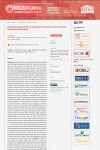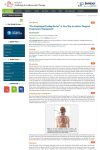Read more about the ensoETM® in these publications
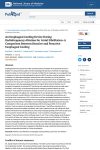
Authors: Clark, B., Alvi, N., Hanks, J., Joseph, C., & Suprenant, B.

Authors: Leung, L., Akhtar, Z., Elbatran, A.I., Bajpai, A., Li, A., Norman, M., Kaba, R., Sohal, M., Zuberi, Z., & Gallagher, M.M.
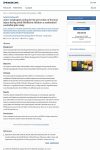
Authors: Tschabrunn, C. M., Attalla, S., Salas, J., Frankel, D. S., Hyman, M. C., Simon, E., Sharkoski, T., Callans, D. J., Supple, G. E., Nazarian, S., Lin, D., Schaller, R. D., Dixit, S., Marchlinski, F. E., & Santangeli, P.

Authors: Leung, L. W. M., Bajpai, A., Zuberi Z., Li, A., Norman, M., R Kaba, R. A., Akhtar, Z., Evranos, B., Gonna, H., Harding, I., Sohal, M., Al-Subaie, N., Louis-Auguste, J., Hayat, J., & Gallagher, M. M.
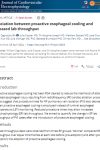
Authors: Zagrodzky, W., Cooper, J., Joseph, C., Sackett, M., Silva, J., Kuk, R., McHugh, J., Brumback, B., Park, S., Hayward, R., Taneja, T., Vu, A., Liu, T., Kulstad, E., Kaplan, A., Ramireddy, A., Omotoye, S.
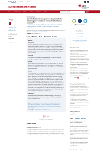
Authors: Joseph, C., Cooper, J., Zagrodzky, J., Kulstad, E., Bailey, S., Sherman J., Nazari, J., Athill, C., Daniels, J., Mcdonald, S., Ruppert, A., Willms, D., Kawasaki, R., Turer, R., Metzl M.
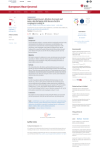
Authors: Cooper, J., Joseph, C., Turer, R., Mcdonald, S., Kulstad, E., Daniels, J.
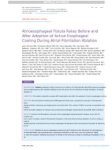
Authors: Sanchez, J., Woods, C., Zagrodzky, J., Nazari, J., Singleton, M.J., Schricker, A., Ruppert, A., Brumback, B., Jenny, B., Athill, C., Joseph, C., Shah, D., Upadhyay, G., Kulstad, E., Cogan, J., Leyton-Mange, J., Cooper, J., Tamirisa, K., Omotoye, S., Timilsina, S., Perez-Verdia, A., Kaplan, A., Patel, A., Ro, A., Corsello, A., Kolli, A., Greet, B., Willms, D., Burkland, D., Castillo, D., Zahwe, F., Nayak, H., Daniels, J., MacGregor, J., Sackett, M., Kutayli, W.M., Barakat, M., Percell, R., Akrivakis, S., Hao, S.C., Liu, T., Panico, A., Ramireddy, A., Dewland, T., Gerstenfeld, E.P., Lanes, D.B., Sze, E., Francisco, G., Silva, J., McHugh, J., Sung, K., Feldman, L., Serafini, N., Kawasaki, R., Hongo, R., Kuk, R., Hayward, R., Park, S., Vu, A., Henry, C., Bailey, S., Mickelsen, S., Taneja, T., Fisher, W., Metzl, M.
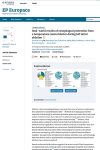
Authors: Leung, L.W.M., Toor, P., Akhtar, Z., Bajpai ,A., Li, A., Sohal, M., & Gallagher, M.M.
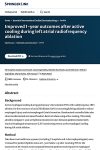
Authors: Joseph, C., Nazari, J., Zagrodzky, J., Brumback, B., Sherman, J., Zagrodzky, W., Bailey, S., Kulstad, E., & Metzl, M.
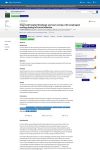
Authors: Joseph, C., Cooper, C., Sikka, R., Zagrodzky, J., Turer, R.W., McDonald, S.A., Kulstad, E., & Daniels, J.
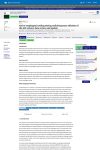
Authors: Cooper, J., Joseph, C., Zagrodzky, J., Woods, C., Metzl, M., Turer, R.W., McDonald, S.A., Kulstad, E., & Daniels, J.

Authors: Leung, L., Akhtar, Z., Elbatran, A.I., Bajpai, A., Li, A., Norman, M., Kaba, R., Sohal, M., Zuberi, Z., & Gallagher, M.M.
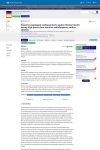
Authors: Montoya, M.M., Bustamante, T.G., Berjano, E., Mickelsen, S.R., Daniels, J.D., Arango, P.H., Schieber, J. &, Kulstad, E.
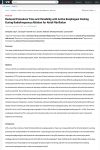
Authors: Joseph, C., Cooper, J., Turer, R.W., McDonald, S.A., Kulstad, E.B., & Daniels, J.
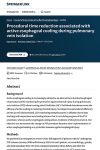
Authors: Joseph, C., Sherman, J., Ro, A., Fisher, W.G., Nazari, J., & Metzl, M.
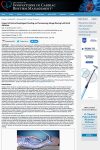
Authors: Zagrodzky, J., Bailey, S., Shah, S., & Kulstad, E.
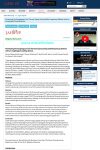
Authors: Montoya, M. M., Mickelsen, S., Clark, B., Arnold, M., Hanks, J., Sauter, E., & Kulstad, E.
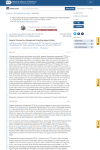
Author: Anderson C.M., Joseph C., Fisher R., Berry D., Diestelhorst J.B., Kulstad C., & Wayne M.
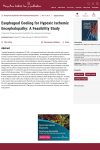
Authors: Smith, T., Couillard, P., McBeth, P., Hruska, P., & Kortbeek, J.
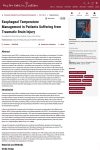
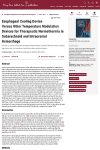
Authors: Khan, I., Haymore, J., Barnaba, B., Armahizer, M., Melinosky, C., Bautista, M. A., Blaber, B., Chang, W. T., Parikh, G., Motta, M., & Badjatia, N.
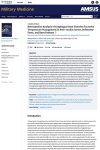
Authors: Naiman, M., Markota, A., Hegazy, A., Dingley, J., & Kulstad, E.
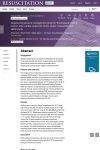
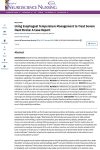
Authors: Martin, K. R., Naiman, M., & Espinoza, M.


Authors: Hegazy, A. F., Lapierre, D. M., Butler, R., Martin, J., & Althenayan, E.
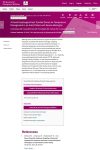
Authors: Markota, A., Košir, A. S., Balažič, P., Živko, I., & Sinkovič, A.
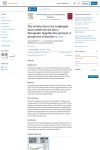
Authors: Markota, A., Fluher, J., Kit, B., Balažič, P., & Sinkovič, A.
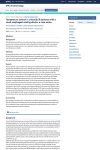
Authors: Hegazy, A. F., Lapierre, D. M., Butler, R., & Althenayan, E.
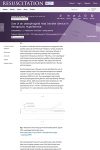
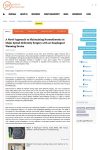
Authors: Davenport, O. R., Mazal, A. T., Davies, M. T., Bagley, C. A., & McDonagh, D. L.
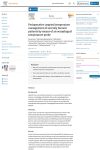
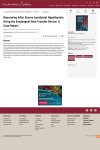
Authors: Primožič, K. K., Svenšek, F., Markota, A., & Sinkovič, A.
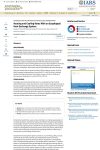
Authors: Kalasbail, P., Makarova, N., Garrett, F., & Sessler, D. I.
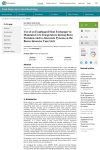
 This site is intended for US products only.
This site is intended for US products only. 